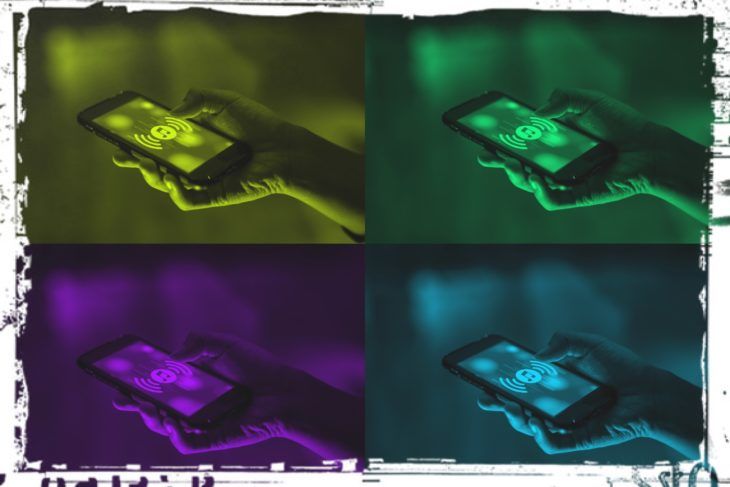For many music fans buying costly records or CDs is a quaint and distant memory. It meant collections were limited by budget. Today though, the prevalence of free or cheap streaming and downloading platforms on social media has given music lovers a deafening, near unlimited and often overwhelming choice.
Take the streaming service Spotify as an example. Its 180 million monthly users in 65 regions have access to 35 million songs – and that number is growing as we speak.
By June 2017 it had 36% of all music streaming subscribers worldwide, ahead of its closest competitor Apple Music’s 17%.
The arrival of social media platforms midway through the last decade brought a very different way for audiences across the globe to engage with music. From the pioneering MySpace founded in 2003 to YouTube, Facebook and Instagram, producers and consumers alike have been avidly sharing old, undiscovered and fresh new music.
Other audio-specific platforms such as SoundCloud and Mixcloud also empower users to take control of what music they share and receive, offering a counterpoint to paid download and streaming sites such as iTunes and Spotify. These platforms have furthered the already broad spectrum of music available to the public, and arguably have reached a point of online music saturation.
This means discerning consumers have to be even more strategic when attempting to find the new music that they seek. Also, the music delivered via these platforms is often done with minimal human engagement.
But recently the popularity of Boiler Room and Tiny Desk concerts has increased dramatically since their inception towards the end of the 2000s. This strongly suggests that online audiences desire interaction with the artists they follow and their peer group fan base.
Global Music Performances
Boiler Room was set up as an independent platform and as a music and culture curator. It has been building an archive of global music performances and scenes since 2010, featuring over 4,000 performances, by more than 5,000 artists, spanning 150 cities. It recently had an African tour, starting in Cape Town, South Africa then to Douala, Cameroon to Nairobi in Kenya and ending back in South Africa, in Johannesburg.
Tiny Desk was launched slightly earlier, debuting in 2008. It is a project of National Public Radio, an American privately and publicly funded non-profit membership media organization.
Both have close to two million followers on YouTube. The major benefit these two platforms share is their engagement with intimate live audiences while retaining a quality of performance and sound within the immediate spatial and streaming experience.
The main concept here is that when one is watching an online show, one gets close up and personal with the performer as if standing in front of the stage or DJ booth.
An additional layer of human engagement comes courtesy of the crowd as one observes as they dance, sing along or simply soak up the performance. Take veteran hip-hop artist Big Daddy Kane’s performance for Tiny Desk as an example: his lyrics are clear, smoothly delivered and one can feel the charisma oozing from his presence.
Having seen Big Daddy Kane perform many times at conventional music venues, I feel a different connection when watching his show on Tiny Desk.
There exists a personal as much as spatial closeness. This personal closeness is also cultivated by intimacy – reflected in Kane’s eloquent, low-key delivery and rapport with the band.
Boiler Room similarly generates a closeness between performer and observer. The session by British DJ, Nightmares On Wax at Boiler Room London is a good example. The camera stays fixed at point-blank range directly in front of the turntables for 86 minutes as the DJ works his set, where a handful of people can also be seen hanging out backstage.
Similarly, South African producer and DJ Culoe De Song’s Boiler Room set in Johannesburg focuses on the DJ at work, but with additional camera angles which present fragments of the crowd and some serious dancing. Still, the online viewer witnesses the intimacy and intensity of a small crowd through their screen.
The Future Of Music
Does the relationship between the microscale and informal nature of these performances with the macro scale of the internet broadcast hold the future for new music’s progression? Can the dialectic of intimate connection versus worldwide reach work harmoniously and be sustained? I am hopeful that the answers are yes.
It is this bridging of the gap between human experience and technological interface that makes Boiler Room and Tiny Desk successful. Although Boiler Room has branched out into festivals, open-air concerts and mini-documentaries, the relationship it shares between its performers, real and virtual space audiences remain intimate, as does its attitude to music and culture. As someone who also live streams visual and sonic DJ shows, I can attest to the feeling of intimacy with one’s audience.
These virtual events are not only about watching performances or discovering new music, they can empower and inspire their audiences. Of course, small and intimate performances have continued to take place across genre and location, but the Boiler Room/Tiny Desk style responds to the overload of the megastar performance and stadia arena typologies.
This reinterpretation of the local show reclaims the DIY approach to music culture and returns to music as craft as audiences witness performers working closer. Boiler Room started by using a “webcam taped to a wall.”
Let’s hope it doesn’t lose that sense of DIY, of the subversive and the marginal, for here is where the magic happens.
Adam de Paor-Evans, Principal Lecturer in Cultural Theory / Research and Innovation Lead, School of Art, Design and Fashion, Faculty of Culture and the Creative Industries, University of Central Lancashire
This article was originally published on The Conversation. Read the original article.

